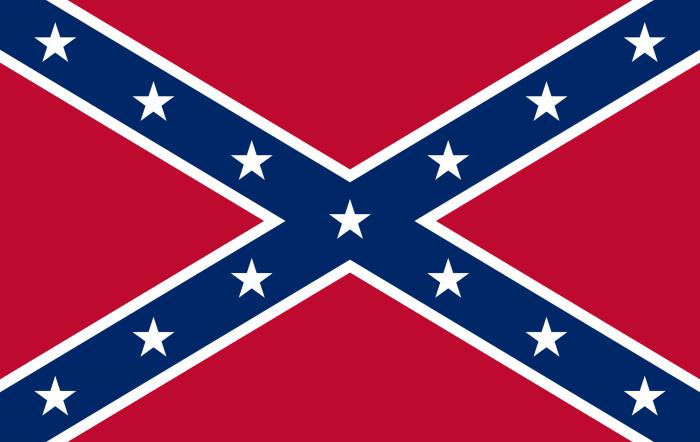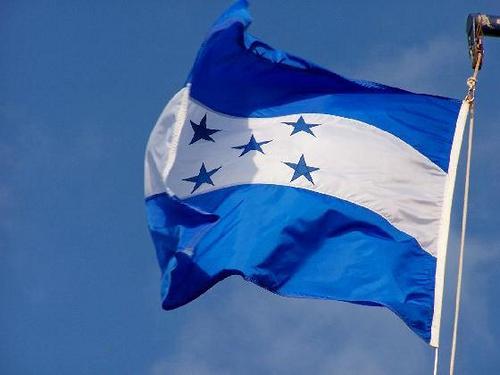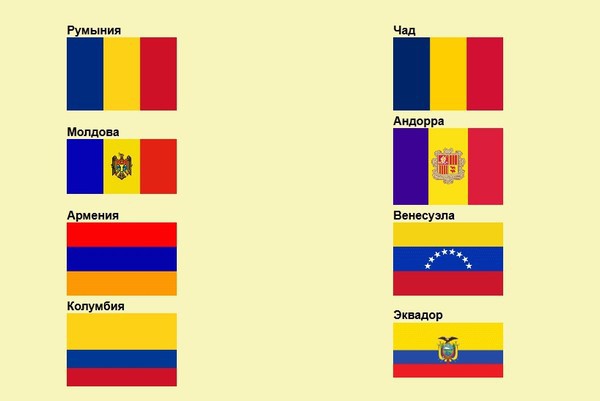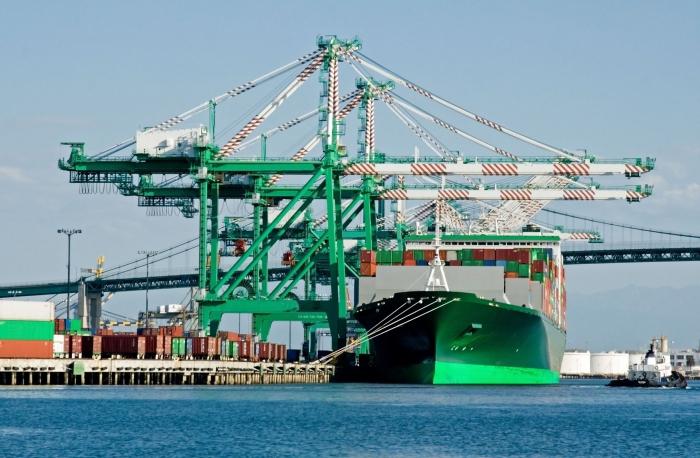Marine flags. Naval Flag of Russia
The Navy is honored by traditions, observes ancient ritualsand cherish the symbolism. Everyone knows that the main flag of the Russian Navy is the St. Andrew's banner, proudly fluttering on the masts and main-tops of the first imperial sailing ships of the Petrine fleet. However, not everyone knows that even then there were other sea flags, differing in function and informative orientation. This situation is still valid today.

Birth of St. Andrew's flag
The Russian fleet was created by Peter the Great, he alsotook care of his symbols. The first sea flags he drew himself and went over several options. At the heart of the chosen version lay the "oblique" Andreevsky cross. It was this version, which became the eighth and last, served until the October Revolution of 1917. Overlaid with the cross of St. Andrew the First-Called, Russian ships won many victories, and if they were defeated, the glory of the heroism of the sailors survived generations and shines until now.
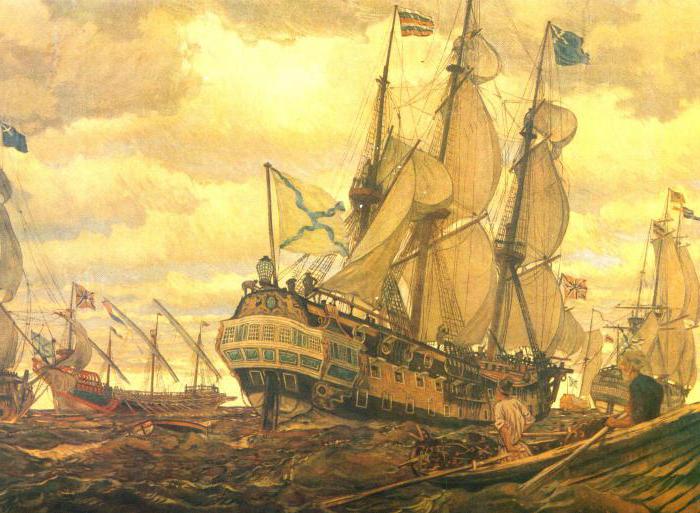
Saint Andrew the First-Called
The reason for choosing this particularsymbol, has a profound meaning. The fact is that the first disciple of Christ, Andrew the First-Called, brother of the Apostle Peter, is simultaneously considered the patron sailor (he was a Galilean fisherman), and Holy Russia. In his wanderings, he visited Kiev, Veliky Novgorod, and Volkhov among many other cities, preaching the Christian faith. Apostle Andrew took martyrdom on the cross, while his executioners crucified, not on a straight, but on an oblique cross (thus the concept and the name of this symbol arose).
The naval flag of Russia in the final version of Petrine looked like a white cloth crossed out with a blue cross. It is the same today.

The Soviet period
In the first years after the revolution, the Bolsheviks did notgave naval power of great importance. During the Civil War, almost all the fronts were land, and when the disaster came, the maintenance of complex equipment simply did not have the means. A few ships of river and sea flotilla, left at the disposal of the new government, raised the red flag. To naval traditions, heraldry, symbols, history and the like "the dust of the old world" the leadership of the workers 'and peasants' army and comrade LD Trotsky were treated with contempt.
In 1923, a former officer of the tsarist fleetOrdynsky nevertheless persuaded the Bolsheviks to adopt a special flag for ships, suggesting a rather strange version - an almost complete copy of the Japanese banner with the mark of the Red Army in the center. This flag of the RSFSR navy flew on the lanes and flagpoles until 1935, then it was abandoned. Imperial Japan became a likely enemy, and from afar the ships could easily be confused.
Decision on a new red-flotted pennantwas adopted by the Central Executive Committee and the Council of People's Commissars of the USSR. Already at that time there was a certain continuity, white and blue colors appeared on it, borrowed from the Andreevsky banner, but, of course, without a star and sickle with a hammer, and red, a new symbol of the Soviet Navy could not.
In 1950, it was slightly changed, reducingthe relative dimensions of the star. The flag acquired a geometric balance, objectively it became more beautiful. In this form it existed before the collapse of the USSR and another year, while there was confusion. In 1992, all the ships of the Russian Navy raised new (more precisely, revived old) Andreev naval flags. The color of the cross did not exactly correspond to the historical tradition, but in general it was almost the same as under Peter the Great. Everything returned to normal.

What flags are on the fleet
Flags in the fleet are different, and their purposeis different. In addition to the usual stern Andreevsky banners on the ships of the first and second ranks, also rises, but only during the parking at the pier. After going to sea, the stern flag rises on the mast or the mast (at the highest point). If a fight begins, the flag is raised.

Colored flags
Charter also provides for pennants of naval commandersdifferent ranks. Naval flags denoting the presence of commanders on board are indicated by a red cloth, a quarter of which is occupied by a blue Andreevsky cross on a white background. On the color field are:
- one star (white) - if on board the commander of the formation of ships;
- two stars (white) - if on board the commander of a flotilla or squadron;
- three stars (white) - if on board the fleet commander.
In addition, there are other colored flags, withimage of the emblem of the Russian Federation on a red background, crossed by two crosses, Andreevsky and straight white or with two intersecting anchors on the same background. This means presence on the ship of the Minister of Defense or Chief of Staff.

Signal flags
Information exchange, as in former times,can be carried out through visual symbols, including marine signal flags. Of course, in the age of electronic means they are used extremely rarely and, rather, serve as a symbol of the inviolability of naval traditions, and in the days of holidays they decorate with their multicolor the ball-and-gray monotony of ship's camouflage, but, if necessary, can fulfill their immediate function. Seamen should be able to use them, and for this they need to learn the directories-vaults, in which all the flag signals are listed. These volumes consist of sections in which decodings of geographical names, names of ships, military ranks and similar information are collected. Directories are two-flags and three-flags, with the help of many combinations, you can quickly report the situation and transfer orders. Negotiations with foreign courts are conducted through the International Code of Flag Signals.
In addition to pennants, meaning whole phrases, there have always been alphabetic flags with which you can compose any message.

Flags with St. George ribbon
All military units are conventionally divided into ordinary andGuards. A distinctive feature of the Guards in Russia is the St. George ribbon, which is present in the symbolism of the unit. The sea flags, decorated with an orange-black stripe, mean the belonging of the ship or shore base to the number of particularly glorified parts. From the original idea that the ribbon should become a separate element of the banner, the sailors refused, so that she could not turn around the flag-halyard, and now the St. George's symbol is applied directly to the canvas in its lower part. This naval flag of Russia testifies to the special combat readiness and high class of both the ship and its crew, it obliges much.

Marines Flag
In the days of the USSR, each type of army had its ownsymbolism. For example, naval border guards belonging to the USSR State Security Committee had its own flag, which was a compilation of the flag of the Navy in a reduced form on the green field. Now, after the adoption of a single sample, the diversity has become less, but there have appeared unofficial symbols created by the imagination of servicemen, and that is probably more beloved and revered by them. One of them is the flag of the Marine Corps. In essence, this is the same Andrew's white with a blue cross canvas, but it is supplemented by a patch of this kind of troops (a golden anchor in the black circle), the inscription "Marine Infantry" and the motto "Where we are, there is victory!".
Marine infantry was created in Russia earlier thanin many other countries (practically together with the fleet), and during its existence has covered itself with unfading glory. In 1669, the first division was the team "Eagle", and in 1705 the first marine regiment was formed. It was November 27th, and since then this day began to be celebrated by all the Marines. They fought not only as marines, participated in land operations, and during the Napoleonic invasion, and in other wars (Crimean, Russian-Turkish, First World, Great Patriotic). In the armed conflicts of the last decades, they also had a chance to fight, and the enemy knew that if the flag of the Marine Corps was raised, the circumstances for him were very unfavorable and it was best for him to retreat.
After a long break in February 2012heraldic naval justice was restored. From the hands of the President of the Russian Federation, V. V. Putin, Navy Commander-in-Chief Admiral Kuroyedov received an updated naval flag of Russia. Now it is flying over all the oceans.
